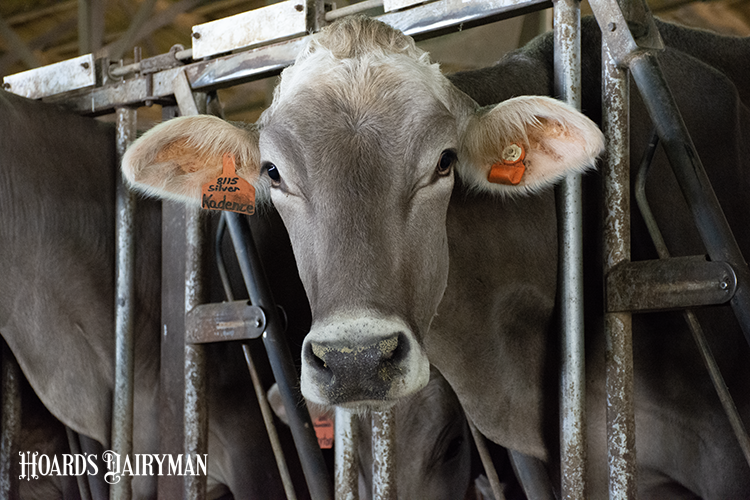
The first best day of Don Niles’ dairy career was when the first of his clients installed self-locking headlocks. As a veterinarian, that simple tool made herd checks a lot easier and safer for both him and the farm employees, he said at the Dairy Cattle Reproduction Council annual meeting.
What he describes as his “new best days” are now when his farms stop using headlocks.
“They are a great technology that I think we have outgrown,” said Niles, who is also a partner in two Wisconsin dairies.
During the conference, Niles explained that both of those farms have been using activity collars for a few years now as a way to reduce their reliance on timed A.I. and find sick cows sooner. That technology has allowed them to greatly reduce the amount of time cows are standing in headlocks, mainly by eliminating the use of tail chalk. They are still using a double ovsynch protocol, but the collars have reduced the need for resynchronizing cows by 80%.
The activity monitoring has also done a great job at finding sick cows, Niles said. Before, they would lock up fresh cows and do a walk-through health check that took an hour every day. Now, the collars take care of most of that work, and the farm staff is instead focused on watching cows that have triggered the system.
In both reproduction and health situations, only the cows that truly need attention are directed to headlocks, while the others can return from the parlor and go eat or lie down. For the cows that are locked up, the smaller group size allows employees to work with the animals more efficiently and get them unlocked quicker.
The results of less lock-up time have been remarkable, Niles continued. Since moving to collars, production has made a significant jump, and although not all of that is related to standing time, he said a relationship is certainly there. When cows are not using as much energy to stand in headlocks, sole fatigue and metabolic demands are reduced. There’s also less interruption to the cow’s normal behavior.
“We feel not locking the cows up has had tremendous effects on their energy, fertility, and milk levels,” Niles shared. He specifically pointed to the fact that when not forced to lock up, cows typically won’t choose to crowd near other cows like they are when a group is locked up. It’s like humans choosing seats on an airplane, he said; crowding is not the first choice. But this is how farms have made use of the tool. Described Niles, “We’ve got cows used to things that work for us but might have some metabolic effects for them.”
It is hard to quantify lock up time for each cow, he recognized, so group data is the best source. If standing time is excessive, he advised considering if the benefits of whatever they are locked up for (often a reproductive protocol) truly outweigh the benefits of the milk lost because of reduced eating and lying time.
Activity monitors will not be feasible or the right choice for every farm, and headlocks remain a useful tool for many herd chores. But it is worth evaluating how much time your cows are standing in headlocks and if that can be scaled back to allow more time for a cow’s productive activities.








